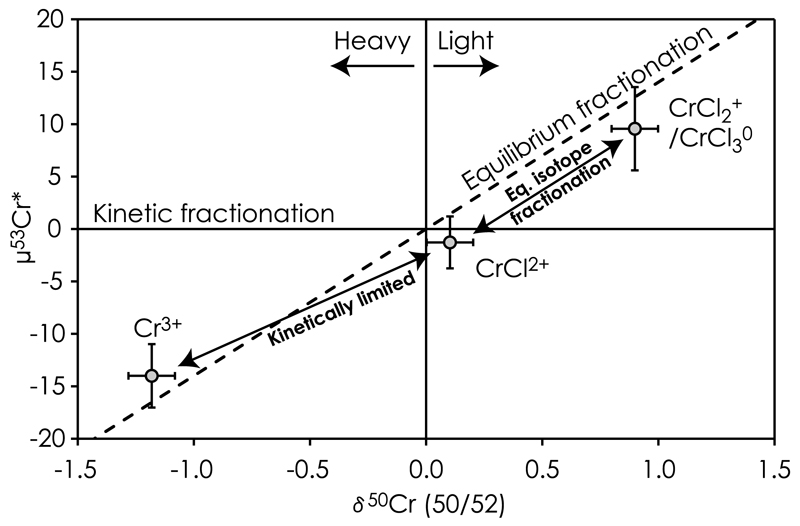Fig. 7.
Chromium isotope diagram showing the artificially produced mass-independent μ53Cr* anomalies for Cr(III)-species when using the exponential/kinetic fractionation law for mass-bias correction. The speciation assemblage was produced through partial equilibration of a pure CPI Cr standard by several months of exposure to 6 M HCl at room temperature. The exchange of Cr isotopes between Cr(III)-species has reached near equilibrium fractionation with the lighter isotopes partitioning for Cr(III)-Cl complexes with weak Cr-ligand bonds as opposed to the heavier isotopes, which prefer the Cr3+ specie. Isotope exchange between Cr3+ and CrCl2+ seems to be kinetically limited by the slow reaction kinetics of CrCl2+ de-chlorination. This effect may explain the apparently decreased in magnitude of artificial μ53Cr* anomaly relative to pure equilibrium isotope fractionation for all Cr(III)-species. Preferential loss of either one of these species can result in apparent anomalies in the mass-independent μ53Cr* and μ54Cr* components used to infer radiogenic and nucleosynthetic variability in primitive meteorites.

